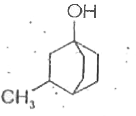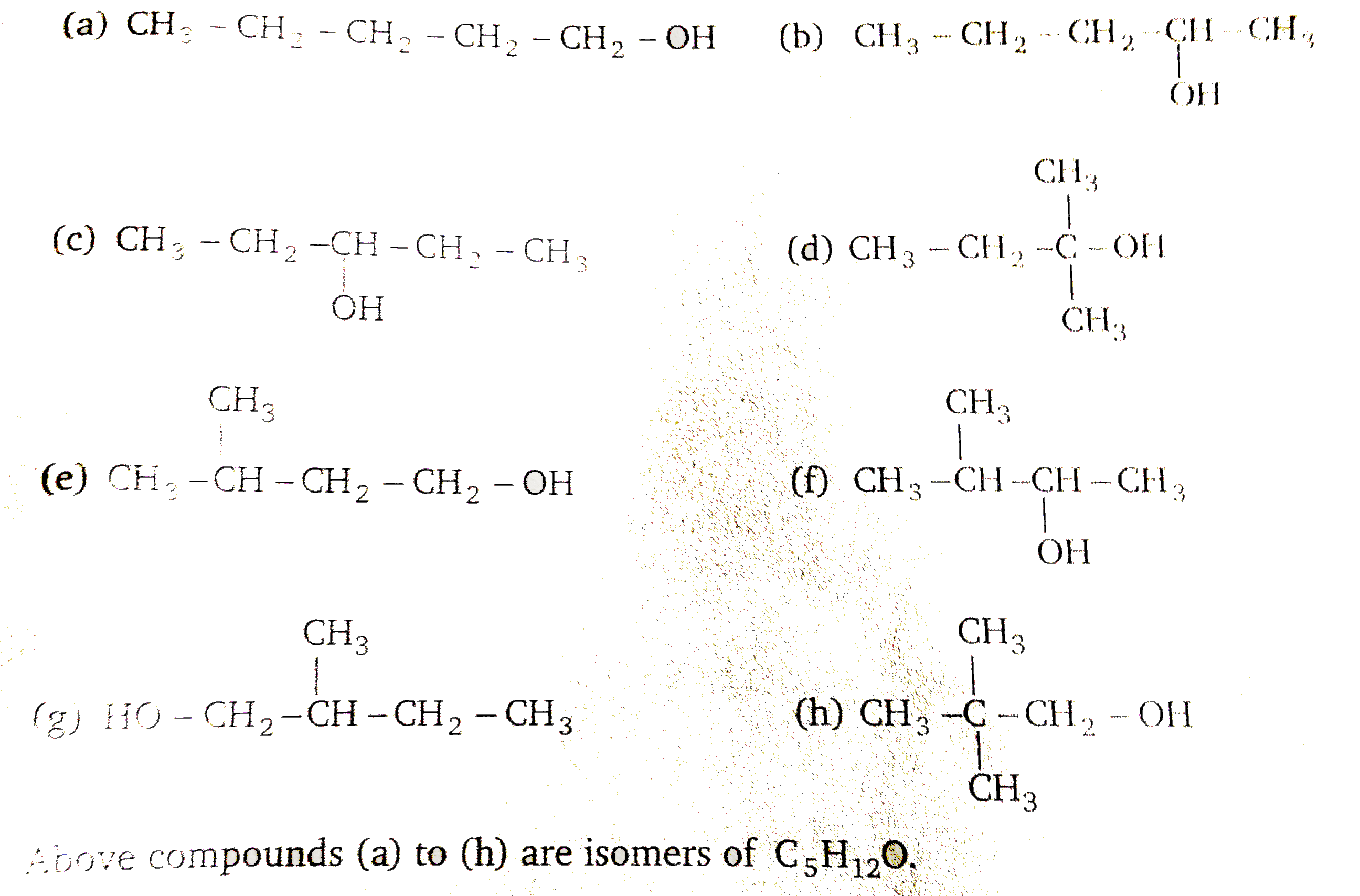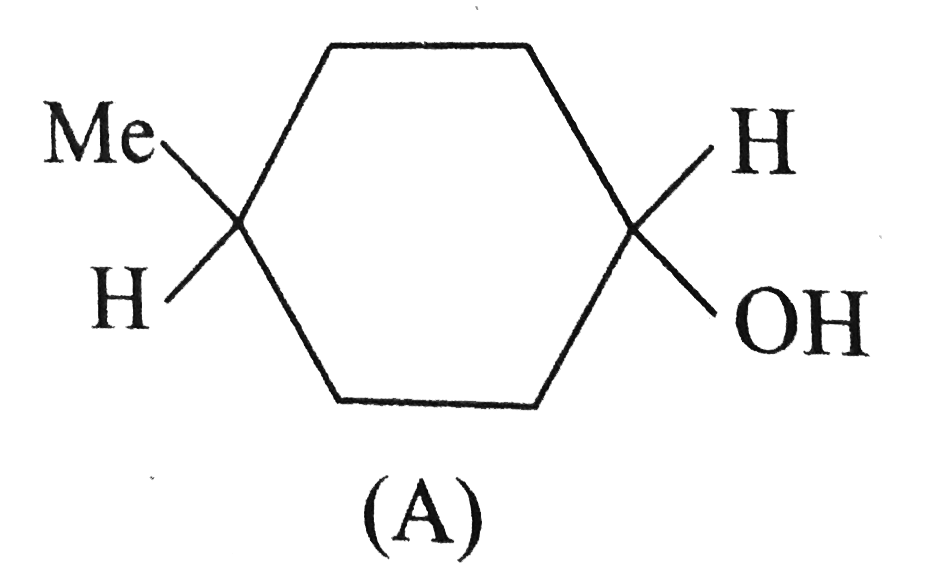Dehydration by conc. H2SO4 is the most difficult in




The correct Answer is:3
To determine which alcohol is the most difficult to dehydrate using concentrated sulfuric acid (H₂SO₄), we need to analyze the stability of the carbocations formed during the dehydration process. The stability of the carbocation is crucial because the formation of the carbocation is the rate-determining step (RDS) in the dehydration mechanism.
1. Understanding Dehydration Mechanism:
- Dehydration of alcohols typically involves the loss of a water molecule (H₂O) to form an alkene. This process can be facilitated by strong acids like concentrated H₂SO₄.
- The mechanism involves protonation of the alcohol to form a better leaving group (water), followed by the formation of a carbocation.
2. Carbocation Formation:
- The first step in the dehydration mechanism is the protonation of the alcohol, resulting in the formation of a protonated alcohol (ROH₂⁺).
- The leaving of water (H₂O) leads to the formation of a carbocation (R⁺).
3. Evaluating Carbocation Stability:
- Carbocation stability follows the order: tertiary (3°) > secondary (2°) > primary (1°) > methyl (0°).
- The more stable the carbocation, the easier it is to form, and thus the easier the dehydration reaction will be.
4. Analyzing Given Options:
- Option 1: A primary alcohol will form a primary carbocation, which is the least stable.
- Option 2: A secondary alcohol will form a secondary carbocation, which is more stable than primary but less stable than tertiary.
- Option 3: A tertiary alcohol will form a tertiary carbocation, which is the most stable.
- Option 4: A compound that cannot form a stable carbocation (like a bridged carbocation) will be very difficult to dehydrate.
5. Conclusion:
- The alcohol that forms the least stable carbocation will be the most difficult to dehydrate.
- Based on the analysis, the primary alcohol (Option 1) is the most difficult to dehydrate because it forms a primary carbocation, which is the least stable.
Final Answer:
The most difficult alcohol to dehydrate by concentrated H₂SO₄ is the primary alcohol.
- Dehydration of alcohols typically involves the loss of a water molecule (H₂O) to form an alkene. This process can be facilitated by strong acids like concentrated H₂SO₄.
- The mechanism involves protonation of the alcohol to form a better leaving group (water), followed by the formation of a carbocation.
- The first step in the dehydration mechanism is the protonation of the alcohol, resulting in the formation of a protonated alcohol (ROH₂⁺).
- The leaving of water (H₂O) leads to the formation of a carbocation (R⁺).
- Carbocation stability follows the order: tertiary (3°) > secondary (2°) > primary (1°) > methyl (0°).
- The more stable the carbocation, the easier it is to form, and thus the easier the dehydration reaction will be.
- Option 1: A primary alcohol will form a primary carbocation, which is the least stable.
- Option 2: A secondary alcohol will form a secondary carbocation, which is more stable than primary but less stable than tertiary.
- Option 3: A tertiary alcohol will form a tertiary carbocation, which is the most stable.
- Option 4: A compound that cannot form a stable carbocation (like a bridged carbocation) will be very difficult to dehydrate.
- The alcohol that forms the least stable carbocation will be the most difficult to dehydrate.
- Based on the analysis, the primary alcohol (Option 1) is the most difficult to dehydrate because it forms a primary carbocation, which is the least stable.
The most difficult alcohol to dehydrate by concentrated H₂SO₄ is the primary alcohol.
Topper's Solved these Questions
- BOOK - AAKASH INSTITUTECHAPTER - HYDROCARBONSEXERCISE - Assignment(Section - C) (Previous Years Questions)69videos
HYDROCARBONS
- BOOK - AAKASH INSTITUTECHAPTER - HYDROCARBONSEXERCISE - Assignment(Section - D) (Assertion -Reason Type Question)24videos
HYDROCARBONS
- BOOK - AAKASH INSTITUTECHAPTER - HYDROCARBONSEXERCISE - Assignment(Section - A) (Obejctive type question)55videos
HYDROCARBONS
- BOOK - AAKASH INSTITUTECHAPTER - HALOALKANES AND HALOARENES EXERCISE - ASSIGNMENT SECTION -D15videos
HALOALKANES AND HALOARENES
- BOOK - AAKASH INSTITUTECHAPTER - HYDROGENEXERCISE - ASSIGNMENT (SECTION - D) (Assertion-Reason Type question)15videos
HYDROGEN
Similar Questions
Knowledge Check
- Question 1 - Select One
Conc. H2SO4 is not
AHygroscopicBDehydrating agentCSulphonating agentDefflorescent - Question 2 - Select One
Conc. H2SO4 is not a
ADehydration agentBHygroscopicCOxidising agentDEfflorescent - Question 3 - Select One
Conc. H2SO4 is not
AHygroscopicBDehydrating agentCSulphonating agentDefflorescent

Based on the above isomer answer the following (A to F).
Which isomers on dehydration with conc. H2SO4 give alkene is capable to show geometrical isomerism ?View SolutionWhen oxalic acid is dehydrated by conc. H2SO4 then it forms
View SolutionIn which of the following dehydration by conc. H2SO4 no rearrangement is favourable ?
View SolutionWhich of the following alcohol on dehydration with conc H2SO4 gives but-2- ene?
View SolutionWhich of the following alcohols on dehydration with conc. H2SO4 give but-2-ene?
View Solution


